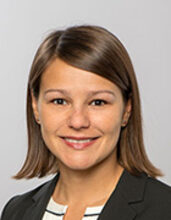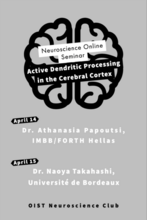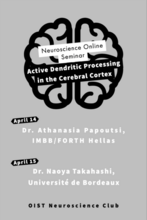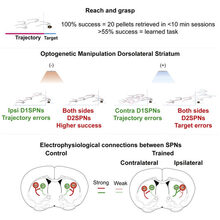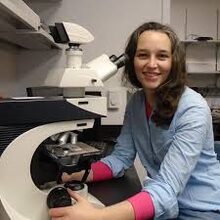Past Events
Emergence of organization and computation in neural circuits
2021-10-28Prof. Dr. Julijana Gjorgjieva
Assistant Professor in Computational Neuroscience, Max Planck Institute for Brain Research, Technical University of Munich
The emergence of organization and computation in neural circuits
How neural circuits become organized during early postnatal development based on patterns of spontaneous activity and different plasticity mechanisms. Prof. Julijana will show the emergence of organization at the sub-cellular and cellular level and discuss implications for computations implemented by these networks. These theoretical models and simulations are supported by experimental data and make numerous predictions for future experiments.
Passcode: 959053
[Seminar] Prof. Tatiana Engel: Flexible identification of cognitive computations from spikes
2021-10-21Prof. Tatiana Engel
Cold Spring Harbor Laboratory, Engel Laboratory, United States
https://facultyprofiles.cshl.edu/tatiana.engel
Zoom link: https://oist.zoom.us/j/98260915981?pwd=dWNFRVQrcUhCNWhrbGhtYWs0TEZPUT09
[Seminar] Professor Genevieve Konopka: Cell type-specific transcriptional networks in brain evolution and disease
2021-10-07Professor Genevieve Konopka
Jon Heighten Scholar in Autism Research
University of Texas Southwestern Medical Center
Inter-Unit Neuroscience Journal Club
2021-07-29Journal Club is open for all neuroscience labs at OIST.
[Seminar] Intrinsic Reward in Birdsong Learning, Prof. Hahnloser
2021-05-27Professor Richard Hahnloser
Institute of Neuroinformatics,
University of Zurich and ETH Zurich
Zoom link: https://oist.zoom.us/j/98260915981?pwd=dWNFRVQrcUhCNWhrbGhtYWs0TEZPUT09
Passcode: 959053
[Seminar] Active Dendritic Processing in the Cerebral Cortex: Dr. Naoya Takahashi (Université de Bordeaux)
2021-04-15OIST Neuroscience Online Seminar
[Seminar] Active Dendritic Processing in the Cerebral Cortex: Dr. Athanasia Papoutsi (IMBB/FoRTH, Hellas)
2021-04-14OIST Neuroscience Online Seminar
Inter-Unit Neuroscience Journal Club
2021-02-25In our first monthly journal club meeting of 2021, Professor Gordon Arbuthnott of the Brian Mechanisms for Behaviour presents a recently published study: Striatal Bilateral Control of skilled forelimb movement. Everyone is welcome to join online.
ZOOM SEMINAR (ONOS series): Hippobellum in health and disease: cerebellar influence on the hippocampus
2021-02-18Hippobellum in health and disease: cerebellar influence on the hippocampus
Prof. Esther Krook-Magnuson, Department of Neuroscience, University of Minnesota
Time: Thursday, Feb 18 at 10 am Zoom link: https://oist.zoom.us/j/96422359435
(ONOS seminar) Unraveling cortical circuits for perceptual decision making
2020-12-11OIST Neuroscience Online Seminar (ONOS)
Prof. Seung-Hee Lee, Associate Professor, Sensory Processing Lab, KAIST
Unraveling cortical circuits for perceptual decision making
Sensory information is a key environmental cue that makes animals guide their behavior. However, it is still unclear how cortical circuits permit appropriate responses to relevant sensory stimuli while inhibiting others. Here, we unraveled cortical circuits that are important for perceptual decision-making in mice performing Go/No-go tasks. We identified parietal and frontal circuits that show unique properties in integrating sensory information and guide action decisions. I will discuss how these circuits work in concert for animals to perform proper action decisions upon the sensory evidence.
ZOOM LINK :
https://oist.zoom.us/j/99896092525?pwd=ZVpMcEQ4SjBISnk4UzJqaFpyeEdOZz09
Meeting ID: 998 9609 2525
Passcode: 931719




